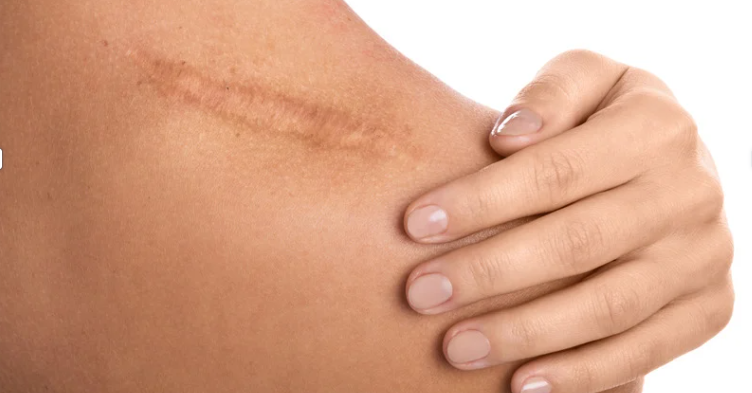Scars, a permanent reminder of past injuries or surgeries, can be a source of aesthetic concern and sometimes even functional limitations. In the quest to improve scar appearance and health, LED light therapy has emerged as a non-invasive option with growing interest. Let’s explore the science behind this approach, its potential benefits for scar tissue, and considerations before undergoing LED light therapy for scars.
Illuminating the Science: How LED Light Therapy Works
LED light therapy, also known as photobiomodulation, utilizes specific wavelengths of light emitted by light-emitting diodes (LEDs) to interact with cells. These light waves are believed to trigger a cascade of cellular events that promote healing and tissue repair. Here’s a glimpse into the potential mechanisms:
- Cellular stimulation: Specific light wavelengths may stimulate the production of fibroblasts, the cells responsible for collagen synthesis, a crucial protein for building and supporting healthy skin.
- Improved circulation: Light exposure may enhance blood flow to the treated area, delivering essential oxygen and nutrients for optimal healing and cellular function.
- Reduced inflammation: LED therapy is thought to modulate the inflammatory response, potentially leading to faster healing and reduced scar formation.
While the exact mechanisms are still being elucidated, LED light therapy is gaining traction for various therapeutic applications, including wound healing, pain management, and even skin rejuvenation.
LED Light Therapy for Scars: Promising Potential with Ongoing Research
The use of LED light therapy for scar management shows promise. Studies suggest that specific light wavelengths, particularly red and near-infrared light, may be beneficial.
A 2017 study published in the journal Lasers in Surgery and Medicine investigated the effects of LED light therapy on post-surgical scars. The study found that treatment with red and near-infrared light resulted in a significant improvement in scar vascularity (blood vessel distribution), pliability (scar softness), and overall scar appearance.
However, it’s important to acknowledge that the research on LED light therapy for scar tissue is still evolving. More extensive clinical trials are needed to definitively establish its efficacy and determine optimal treatment parameters, such as ideal wavelengths, dosage, and duration.
Benefits of LED Light Therapy for Scar Tissue
Despite the need for further research, LED light therapy offers several potential advantages for scar treatment:
- Non-invasive and painless: LED light therapy is a completely non-invasive approach. The treatment is painless and generally well-tolerated.
- Reduced inflammation: By potentially modulating inflammation, LED therapy may promote faster healing and minimize scar formation.
- Potential for improved scar appearance: Studies suggest that LED therapy may improve scar vascularity, pliability, and overall appearance.
Considering LED Light Therapy for Scars: What to Ask
If you’re considering LED light therapy for scar tissue, here are some key points to consider:
- Limited research: While initial findings are encouraging, more robust research is needed to solidify the role of LED light therapy in scar management.
- Individual suitability: Consulting with a healthcare professional is crucial to determine if you’re a good candidate for LED light therapy based on your medical history and specific scar concerns.
- Finding a qualified provider: Look for a licensed healthcare professional with experience in LED light therapy for scar treatment. They can assess your scar and create a personalized treatment plan.
- Realistic expectations: LED light therapy may not completely eliminate scars, but it has the potential to improve their appearance. Realistic expectations and treatment goals are important for a successful outcome.
Conclusion
LED light therapy offers a promising, non-invasive option for improving the appearance and health of scar tissue. While more research is required, the potential benefits and safety profile make it an attractive option for those seeking to minimize the impact of scars. By understanding the current state of research, you can make an informed decision about whether LED light therapy is the right approach for your scar management journey.
Image: Canva Pro

